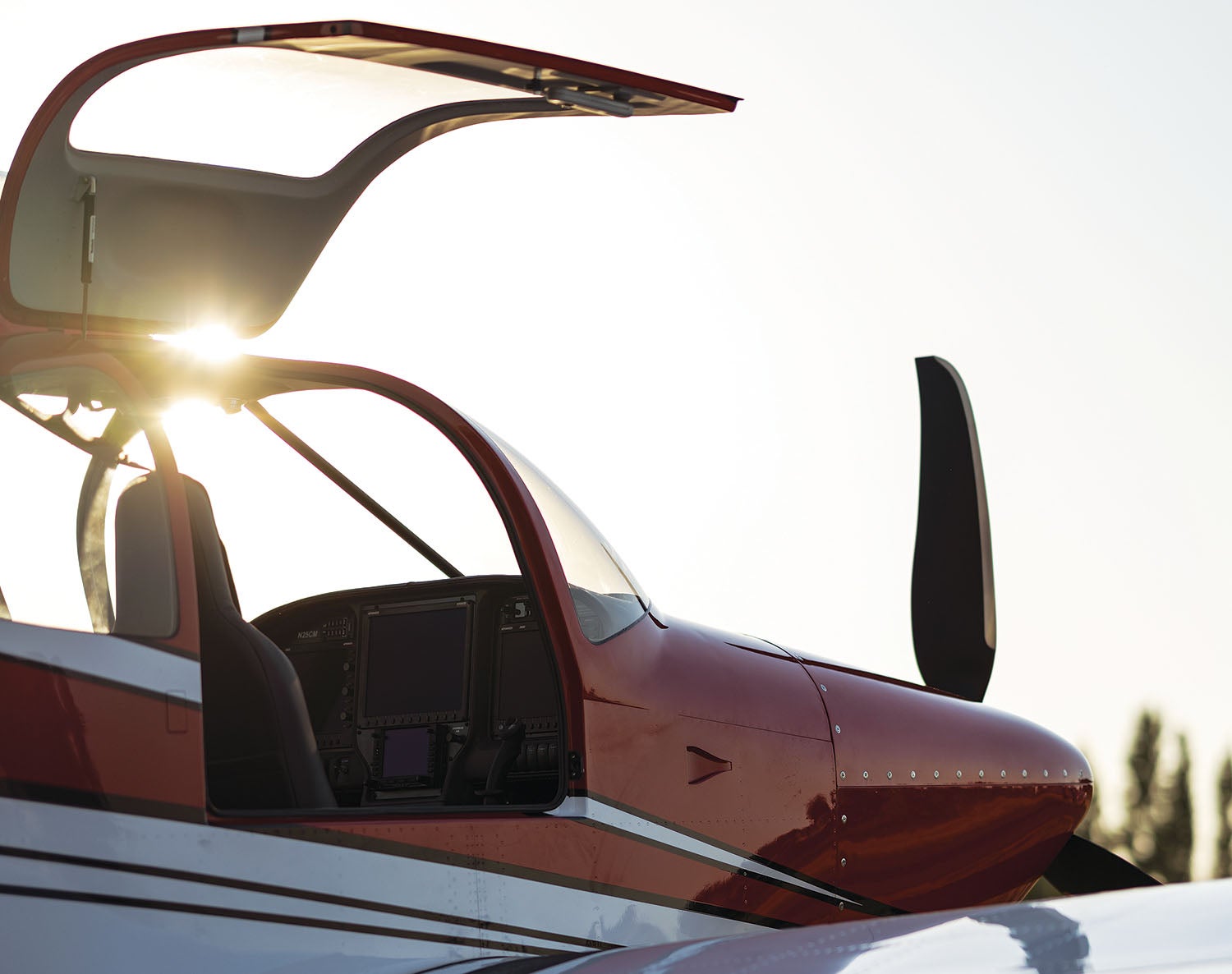 Lots of things can happen to an airplane in flight, and they are often caused by human error before or just after departure. Canopies and doors open up—usually a result of inattention to the latching process. In almost all cases, an unlatched door or canopy is a non-event, so long as the pilot doesn’t make it worse. In a few cases, an unlatched gull-wing door can open up and come off. In these cases, it can damage the tail as it goes, making for a bad day. There are also cases of a pilot struggling with a door or canopy and losing something from the cockpit that hits and/or jams the tail. In all cases, the first thing to do when you get a sudden blast of air is—nothing.
Lots of things can happen to an airplane in flight, and they are often caused by human error before or just after departure. Canopies and doors open up—usually a result of inattention to the latching process. In almost all cases, an unlatched door or canopy is a non-event, so long as the pilot doesn’t make it worse. In a few cases, an unlatched gull-wing door can open up and come off. In these cases, it can damage the tail as it goes, making for a bad day. There are also cases of a pilot struggling with a door or canopy and losing something from the cockpit that hits and/or jams the tail. In all cases, the first thing to do when you get a sudden blast of air is—nothing.
Take a beat, take a breath—and realize that you’re still flying. Now, solve the problem. If there is a re-latching procedure that works in the air, use it. If not, your best option is to land—ignore the door or canopy for now—fix it on the ground and continue on your way. This kind of thing is a distraction, not an emergency—it’s a minor anomaly that you don’t want to make worse.
Warning lights in the cockpit are there to get our attention, and many times they fire off when they really don’t have to. Other times, they are really trying to tell us something. In any case, take that beat, think about what is going on and then react slowly and deliberately. Set your limits such that you get a warning in time to watch what is happening before it becomes an emergency—that way, you can tell if you are watching a trend or just a sudden instrumentation failure. But don’t set warnings so tight that they pop on when everything is close to normal! How do you know the difference?
For a first flight, or the first few flights, you really won’t know what is normal for the airplane—so either set the limits conservatively and expect unnecessary warnings or (here’s a radical idea) set them so they won’t go off at all and rely on your own monitoring skills to catch a problem. Remember, we’ve only had electronic assistance in the cockpit for about 15 years. Before that, we just kept an eye on things. Your brain should be operating at high speed for the first few flights anyway, so monitoring shouldn’t be a hard task.

Gearing Up
Now, there are things that can happen that can definitely make life a bit more exciting, and retractable-gear problems are one of those. Gear stuck down? So long as it is down and locked—not a problem—just take it around the pattern and land. Gear stuck up? Well, the good news is that you most likely have an alternate method of lowering it. Use the backup and land. Still doesn’t work? Remember that it is almost unheard of for a gear-up landing to create an injury—other than to your pocketbook. My general rule for gear issues is to determine how much time I have to work the problem (determined usually by how much fuel I have) and then go methodically through the backup systems, then the aerodynamic and G-loading methods. Follow the recommendations carefully, and don’t get ahead of yourself.
Before I really get too far down the checklist, however, I like to get close to the airport where I intend to land—which might not be my destination or departure points, but rather the best runway for the situation. Give yourself plenty of runway length in case you float the landing—you’re going to have less drag with the gear up and be in more ground effect because you’re going to be closer to the ground.
I have yet to have a gear-up landing, but I have had gear issues that had to be solved in flight. In my worst scenario, I had a nose gear that was stuck up because I’d lost pneumatic pressure. A partially opened, spring-loaded door was holding up the gear. G loading—pulling G’s to help the weight of the gear exert force on the mechanism—didn’t work.
But I was fortunate. This was a test flight with a chase plane, and we had an hour and a half of fuel to work with. The chase pilot could tell me exactly what he saw of the nose gear, and since I had an intimate knowledge of the design, I could translate this information into an action plan. We talked about it, tried some tail wags and finally realized we could use a big yaw event to “blow” the door open with a blast of air from a sideslip. It took a couple of people to think it up, and it worked. By the way, if you want a blast of slipstream from the left of the nose, which pedal do you press? It’s nice to have time to think about it.
Volts and Amps
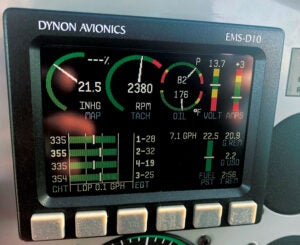
Next, let’s talk about electrical problems. The most common is a charging-system failure—usually caused by an alternator or wiring problem. The signature is likely to be missed if all you have in the cockpit is a voltmeter and an ammeter—unless you have a very studious scan of the system instruments. Fortunately, modern EFISes can be set to give you a message or alarm if the voltage drops below a specified value, and if you get such a message, the first thing to do is check the voltage. Anything below about 12 volts is cause for concern because the alternator should be putting out better than 13 volts to keep the battery charged. However, it’s important to see what is “normal” for your airplane on the ground, with the engine running, because of variations in measurement systems (some ammeter readings lag a bit, for example). Low voltage could mean you’ve overtaxed the alternator/charging system, but it also means you are now operating on the battery.
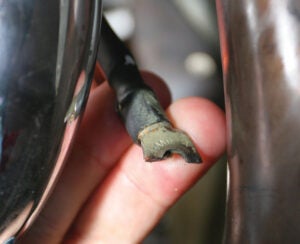
If you have old-fashioned magnetos, you should realize immediately that the engine will keep running, even with the electrical system completely dead. If you are running electronic ignition, it is not so cut and dried. Some generate their own electricity (so long as the engine is already turning above a certain speed) and will keep doing so even without ship’s power. Others require power from the ship’s electrical system to keep the motor running. If the latter is the case in your airplane, you have a limited time to find a place to land. With good designs, you should have enough battery power to last longer than the fuel in your tanks—so don’t panic. Just find a good airport at which to end the flight. However, if you haven’t checked those backup batteries in a while or you’re not sure of how well the system can handle a charging failure, you might pick the closest field—just in case you become a glider. In any case, make a deliberate decision to get the airplane on the ground—make a plan—then stick to it.
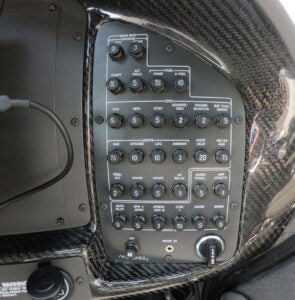
An electrical failure can and will affect more than your ignition, but it shouldn’t lead to disaster. You might lose navigation and communication when the battery dies, so the first thing you should do is eliminate any unnecessary electrical loads. In the old days, the landing and nav lights took a lot of juice, and many still do—if you have LED lighting, there is much lower draw—but I’d still power off all the lights. Secondary or tertiary radios? Off. Entertainment systems or air conditioning? Definitely off. (This is where you’ll be happy you paid a little extra for pullable circuit breakers or left certain fuses accessible in flight for items without their own on-off switches.)
Only keep running what you need to complete the flight to your new destination. If you have electric flaps or gear, make sure that you deploy them before you lose all your juice—plan ahead. If you have electric trim—get it set to where you’ll want it for landing.
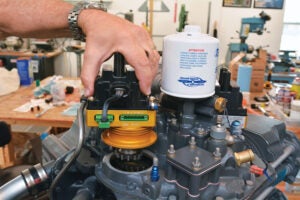
None of this is cause for panic. It is cause for planning. Experimental aircraft have a wide variety of systems designs and implementation. If you are the builder of the plane, you should understand all of the interconnections as well as the potential failure modes and implications without having to refer to anything. Make sure that you test all possible configurations before leaving the ground to make sure it all works the way you expect it to. If you are not the builder, the same rule should apply—but sometimes there are little nooks and crannies that the designer didn’t pass on. In that case, know exactly what you need to safely end a flight on a runway and learn enough to make sure you can keep those things going. Always know how the airplane works—not just how to work it.
The Worst-Case Scenarios
OK, so how about something that can really ruin your day, like a structural failure or a fire? To be very candid, these are reasons I wear a parachute when testing a new aircraft that has a measurable possibility of either. I wear a fire suit when flying a very new aircraft because, well, it’s not uncomfortable and it is cheap insurance. If I wear a parachute, I wear a helmet and boots so that if I have to use the ’chute, I have a good chance of surviving an unpredictable exit from the aircraft. I choose protective clothing because either of these situations might require me to leave the aircraft before touchdown, and in this respect, they have a lot of similarities. But let’s look at them separately.
A dangerous fire can either be in the engine compartment or in the cockpit. If it’s in the cockpit, pull all sources of ignition—turn off the electrical—and use your fire extinguisher under the panel or on the source of the fire in the unlikely situation that it is elsewhere. Now get some ventilation going so you can breathe, and get the airplane on the ground! Fire extinguisher? Yeah, you really do need one of these, and it needs to be in reach, as well as fully charged. I am partial to Halon extinguishers because that’s what we relied on in the space program (where you couldn’t open a window to air things out). Do I want to breathe it every day? Not at all. But I also don’t want to breathe the dry chemical in a typical ABC extinguisher. As a former firefighter, I’ve breathed enough of it to know—it can be as bad as tear gas.
An engine-compartment fire is another matter, and we’ve all been taught to make emergency descents with slips to keep the flames away from the cockpit. That’s as good a plan as any, but don’t forget to turn off everything that goes forward of the firewall, especially the fuel. Kill the fuel, and you remove a lot of the potential for a continuing flame. You can’t do anything about the oil if it ignites, but if you get the avgas out of the picture, it’s a big win. Work the problem.
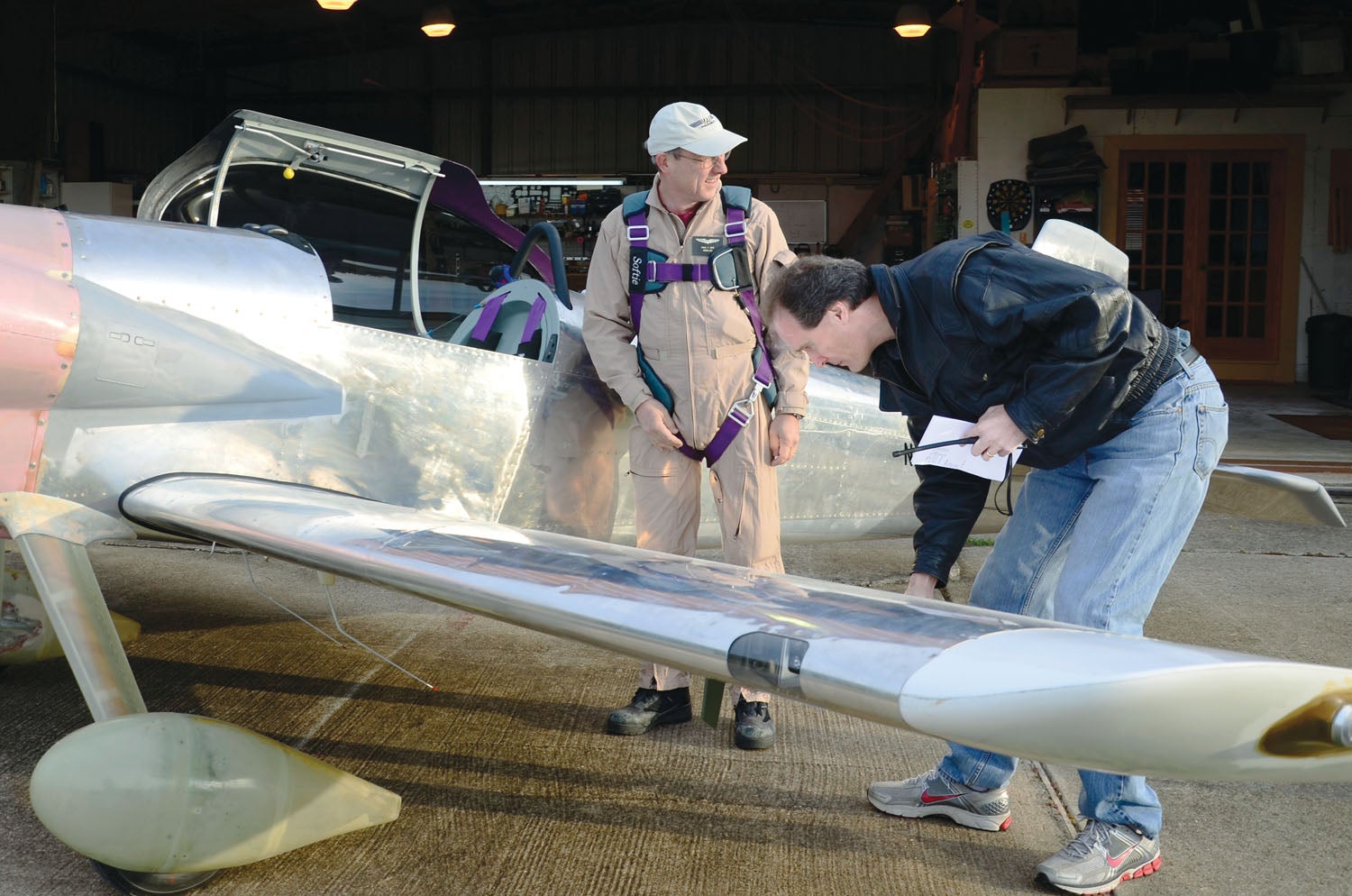
Out You Go
Now let’s be serious about just bailing out. There are many aircraft where this has never been done before, and the potential for a successful exit is unknown. If the airplane has no way to jettison the canopy or remove the door, using a ’chute is probably not a realistic option—so have a plan that includes extinguishment, removing fuel—and getting on the ground as quickly as you can.
How about structural failure? This is rare enough that it is hard to predict what kind of situation you’ll find yourself in. If you hear a sudden “crack!” and the airplane is still flying under control, minimize all loads (fly real gently) as you pick your way to a landing. By the way, structural failure doesn’t necessarily mean that a wing just came off. It can be a small piece of secondary structure (like a canopy, strut or brace wire), or it could be something totally unexpected, like a seat breaking loose. I know of several seat collapses in modern homebuilts that suddenly put the pilot in the back seat. Consider how you’re going to fly from back there while you try to get back where you belong.
Windshields fail, sometimes because birds hit them. The sudden nature of this emergency is its real danger—most airplanes will fly fine without the windshield, but the pilot needs to be alive and able to work the controls. Expect a few seconds of total and utter mayhem followed by lots of noise and wind. The wind and noise won’t go away—you’ll have to deal with it—but so long as you can squint to see and can verify that you still have control, the battle is half over. Slow down as much as possible without stalling, and get on the ground. You will most likely lose whatever eyewear and the headset you are wearing when the windshield goes—you can land without a headset, but you might put some thought into what to do about eye protection and clear vision. Spare glasses or goggles in a pocket are one preparation for this scenario. It’s not unique to Experimentals, of course—this is worth considering any time you fly.
In any case of structural failure, if you’re still flying after you recognize it, you probably will keep flying for long enough to get on the ground. Take the time necessary to evaluate how the airplane flies and determine if you have to compensate for anything while working your way down. Don’t do anything in a hurry—be deliberate, smooth and gentle. Panic just makes it worse.
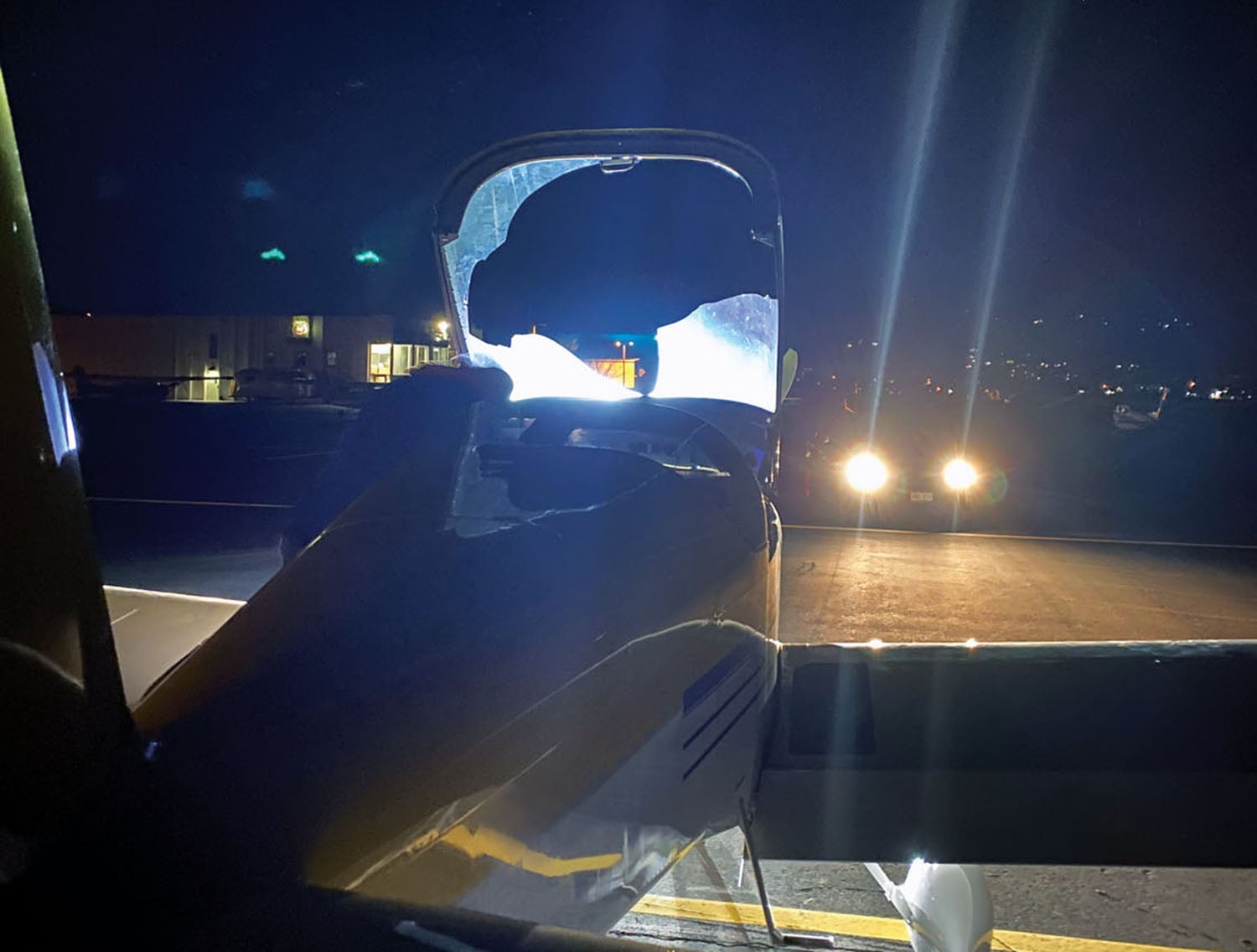
Survival of the Prepared
Surviving the off-nominal is something that takes preparation, practice, experience and maybe a little bit of luck. You can’t really do anything about the luck, but you can directly influence the preparation and practice. Experience comes with time at the controls, and hopefully, you won’t be called to use an extreme level of skill until you have had the experience to develop it.
Preparation is partly study and part thinking, making sure you have thought through all your scenarios and mentally working on your ability to stay cool and not panic. You can practice maneuvers such as emergency descents and forced landings. You can also practice emergency procedures in the cockpit while sitting on the ground, memorizing the known stuff and then thinking about the unknown. You can also practice and build experience by learning aerobatics and getting comfortable in unusual attitudes in both fast and slow conditions. Learning to truly fly in three dimensions is a big plus for anyone facing an unusual aircraft-control problem.
Practice is also something you can do with a CFI—or just a well-qualified friend. Get in an airplane with a proper brief on what you’re going to do, then have them limit or block the controls—flight or engine—for you. See what you can do to try and gain the control you need to climb, descend and turn—once you have those down, you have the basis for getting back to an airport.
What you hope not to do is have frequent bad experiences in the air that force you to learn the skills to overcome them. But in the end, that is sort of what experience building is all about. If you tickle the dragon’s tail at infrequent intervals and come out learning something (and still alive), you’ll build up a store of experience that can help you survive future encounters.
Above all, surviving the off-nominal is about staying calm, being prepared and knowing how and why flying machines stay in the air. Stay in control—no matter how you have to do it—and fly the aircraft until all the pieces stop moving.
Photos: Jon Bliss, Mike Starkey, Paul Dye, Marc Cook.














A good flight helmet is always a plus.
Another excellent article Paul. Advice/council to live by (if you get my drift).